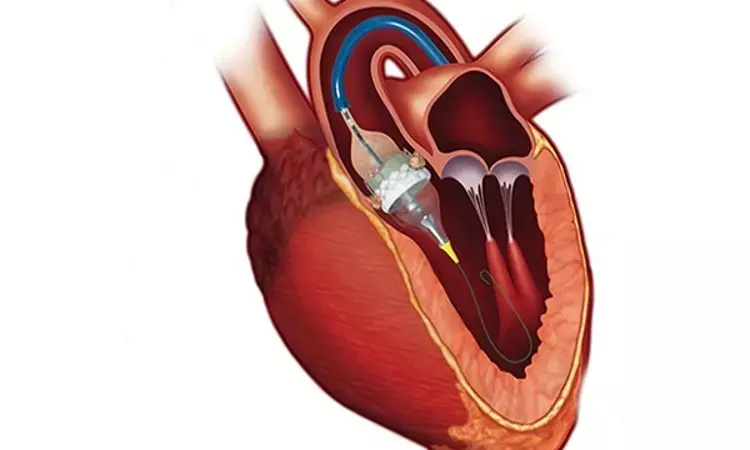- Home
- Medical news & Guidelines
- Anesthesiology
- Cardiology and CTVS
- Critical Care
- Dentistry
- Dermatology
- Diabetes and Endocrinology
- ENT
- Gastroenterology
- Medicine
- Nephrology
- Neurology
- Obstretics-Gynaecology
- Oncology
- Ophthalmology
- Orthopaedics
- Pediatrics-Neonatology
- Psychiatry
- Pulmonology
- Radiology
- Surgery
- Urology
- Laboratory Medicine
- Diet
- Nursing
- Paramedical
- Physiotherapy
- Health news
- Fact Check
- Bone Health Fact Check
- Brain Health Fact Check
- Cancer Related Fact Check
- Child Care Fact Check
- Dental and oral health fact check
- Diabetes and metabolic health fact check
- Diet and Nutrition Fact Check
- Eye and ENT Care Fact Check
- Fitness fact check
- Gut health fact check
- Heart health fact check
- Kidney health fact check
- Medical education fact check
- Men's health fact check
- Respiratory fact check
- Skin and hair care fact check
- Vaccine and Immunization fact check
- Women's health fact check
- AYUSH
- State News
- Andaman and Nicobar Islands
- Andhra Pradesh
- Arunachal Pradesh
- Assam
- Bihar
- Chandigarh
- Chattisgarh
- Dadra and Nagar Haveli
- Daman and Diu
- Delhi
- Goa
- Gujarat
- Haryana
- Himachal Pradesh
- Jammu & Kashmir
- Jharkhand
- Karnataka
- Kerala
- Ladakh
- Lakshadweep
- Madhya Pradesh
- Maharashtra
- Manipur
- Meghalaya
- Mizoram
- Nagaland
- Odisha
- Puducherry
- Punjab
- Rajasthan
- Sikkim
- Tamil Nadu
- Telangana
- Tripura
- Uttar Pradesh
- Uttrakhand
- West Bengal
- Medical Education
- Industry
TAVR for bicuspid vs tricuspid aortic stenosis: No difference in mortality or stroke risk

USA: A recent study in JAMA has shown that TAVR for bicuspid aortic stenosis compared with tricuspid aortic stenosis in patients at low surgical risk was not associated with a significant difference in mortality or stroke at 30 days or 1 year.
Trans Aortic Valve Repair (TAVR) may be an option for people who are at intermediate or high risk of complications from surgical aortic valve replacement (open-heart surgery). Not much is known on the outcomes of TAVR for bicuspid aortic stenosis in patients at low surgical risk.
Dr. Raj R. Makkar, Smidt Heart Institute, Cedars-Sinai Medical Center, Los Angeles, California, and colleagues aimed to compare the outcomes of TAVR with a balloon-expandable valve for bicuspid vs tricuspid aortic stenosis in patients who are at low surgical risk in a registry-based cohort study.
The study included patients undergoing TAVR at 684 US centers. Participants were enrolled in the Society of Thoracic Surgeons (STS)/American College of Cardiology Transcatheter Valve Therapies Registry from June 2015 to October 2020. Among 159 661 patients (7058 bicuspids, 152 603 tricuspids), 37 660 patients (3243 bicuspid and 34 417 tricuspids) who were at low surgical risk (defined as STS risk score <3%) were included in the analysis.
The primary outcomes of the study were 30-day and 1-year mortality and stroke. Secondary outcomes included procedural complications and valve hemodynamics.
Among 159 661 patients (7058 bicuspids; 152 603 tricuspids), 3168 propensity-matched pairs of patients with bicuspid and tricuspid aortic stenosis at low surgical risk were analyzed (mean age, 69 years; 69.8% men; mean STS-predicted risk of mortality, 1.7% for bicuspid and 1.7% for tricuspid).
The results of the study were found to be
- There was no significant difference between the bicuspid and tricuspid groups' rates of death at 30 days (0.9% vs 0.8%; hazard ratio [HR], 1.18) and at 1 year (4.6% vs 6.6%; HR, 0.75) or stroke at 30 days (1.4% vs 1.2%; HR, 1.14) and at 1 year (2.0% vs 2.1%; HR 1.03).
- There were no significant differences between the bicuspid and tricuspid groups in procedural complications, valve hemodynamics (aortic valve gradient: 13.2 mm Hg vs 13.5 mm Hg; absolute risk difference [RD], 0.3 mm Hg), and moderate or severe paravalvular leak (3.4% vs 2.1%; absolute RD, 1.3%).
Dr Makkar and team concluded that "In this preliminary, registry-based study of propensity-matched patients at low surgical risk who had undergone TAVR for aortic stenosis, patients treated for bicuspid vs tricuspid aortic stenosis had no significant difference in mortality or stroke at 30 days or 1 year."
"Because of the potential for selection bias and absence of a control group treated surgically for bicuspid aortic stenosis, randomized trials are needed to adequately assess the efficacy and safety of transcatheter aortic valve replacement for bicuspid aortic stenosis in patients at low surgical risk."
Reference:
Makkar RR, Yoon S, Chakravarty T, et al. Association Between Transcatheter Aortic Valve Replacement for Bicuspid vs Tricuspid Aortic Stenosis and Mortality or Stroke Among Patients at Low Surgical Risk. JAMA. 2021;326(11):1034–1044. doi:10.1001/jama.2021.13346
Dr Prem Aggarwal, (MD Medicine, DNB Medicine, DNB Cardiology) is a Cardiologist by profession and also the Co-founder and Chairman of Medical Dialogues. He focuses on news and perspectives about cardiology, and medicine related developments at Medical Dialogues. He can be reached out at drprem@medicaldialogues.in
Dr Kamal Kant Kohli-MBBS, DTCD- a chest specialist with more than 30 years of practice and a flair for writing clinical articles, Dr Kamal Kant Kohli joined Medical Dialogues as a Chief Editor of Medical News. Besides writing articles, as an editor, he proofreads and verifies all the medical content published on Medical Dialogues including those coming from journals, studies,medical conferences,guidelines etc. Email: drkohli@medicaldialogues.in. Contact no. 011-43720751


